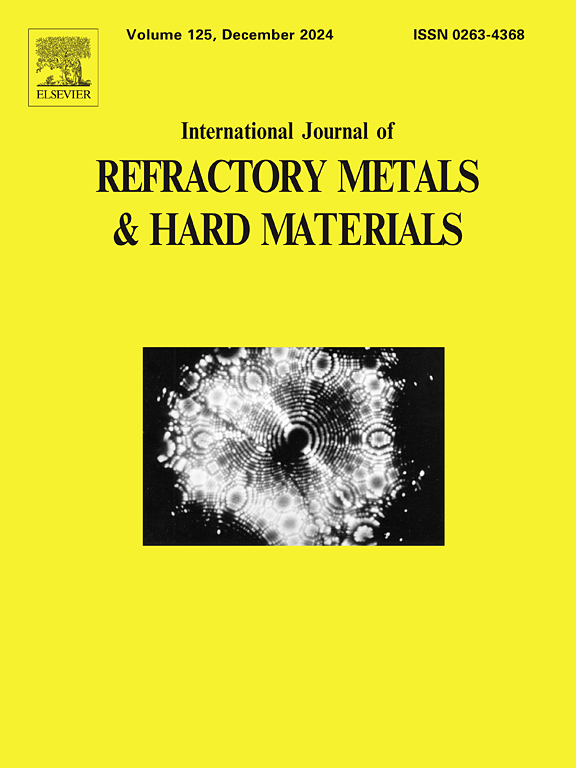Nb 难熔金属与 304 奥氏体不锈钢电子束焊接接头的微观结构和机械性能
IF 4.2
2区 材料科学
Q2 MATERIALS SCIENCE, MULTIDISCIPLINARY
International Journal of Refractory Metals & Hard Materials
Pub Date : 2025-04-03
DOI:10.1016/j.ijrmhm.2025.107177
引用次数: 0
摘要
本文章由计算机程序翻译,如有差异,请以英文原文为准。
Microstructure and mechanical properties of electron beam welded joint of Nb refractory metal to 304 austenitic stainless steel
In this study, the microstructure and mechanical properties of electron beam welded dissimilar joint of Nb to 304 austenitic stainless steel were analyzed. The results showed that the joint obtained were asymmetric due to the large difference in physical properties between the Nb and the 304 austenitic stainless steel. The weld mainly consisted of eutectic structure and brittle intermetallic compounds reaction layer. The eutectic phase was composed of α-Fe ferrite and ε(Fe2Nb) intermetallic compound. The brittle phases in the reaction layer were ε(Fe2Nb) and μ(Fe7Nb6). The microhardness of the reaction layer of the joint was up to 1065 HV, and the presence of ε(Fe2Nb) in the eutectic region contributed to its high microhardness as well. The tensile strength of the welded joint was 137 MPa, which was 53 % of that of the Nb base metal. The joint failed at the reaction layer by brittle cleavage fracture.
求助全文
通过发布文献求助,成功后即可免费获取论文全文。
去求助
来源期刊
CiteScore
7.00
自引率
13.90%
发文量
236
审稿时长
35 days
期刊介绍:
The International Journal of Refractory Metals and Hard Materials (IJRMHM) publishes original research articles concerned with all aspects of refractory metals and hard materials. Refractory metals are defined as metals with melting points higher than 1800 °C. These are tungsten, molybdenum, chromium, tantalum, niobium, hafnium, and rhenium, as well as many compounds and alloys based thereupon. Hard materials that are included in the scope of this journal are defined as materials with hardness values higher than 1000 kg/mm2, primarily intended for applications as manufacturing tools or wear resistant components in mechanical systems. Thus they encompass carbides, nitrides and borides of metals, and related compounds. A special focus of this journal is put on the family of hardmetals, which is also known as cemented tungsten carbide, and cermets which are based on titanium carbide and carbonitrides with or without a metal binder. Ceramics and superhard materials including diamond and cubic boron nitride may also be accepted provided the subject material is presented as hard materials as defined above.

 求助内容:
求助内容: 应助结果提醒方式:
应助结果提醒方式:


